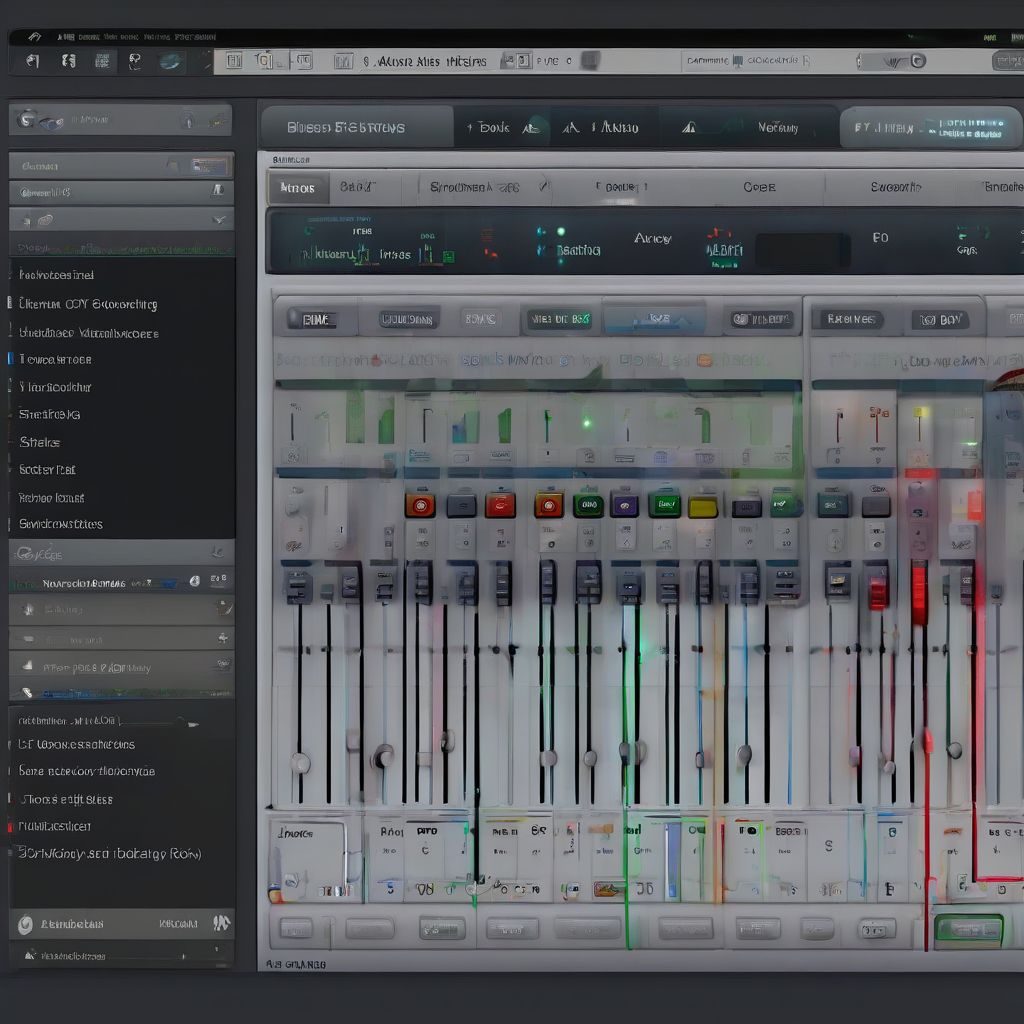Imagine this: you’ve just finished recording a killer track. The instruments are tight, the vocals are pristine, but something’s missing. It still sounds kind of… flat. Like it’s stuck in a small, lifeless room. This is where the magic of reverb and delay comes in. These powerful effects, when used correctly, can transform a flat, lifeless mix into a three-dimensional soundscape, brimming with depth and emotion.
Understanding Reverb and Delay
Before we dive into the “how”, let’s quickly break down the “what”.
Reverb: The Illusion of Space
Reverb recreates the sound reflections that occur in a physical space. Think of a cathedral – its large size and hard surfaces create long, ethereal reverbs. Conversely, a small room with carpets and curtains will have a much shorter, more controlled reverb.
Delay: Echoes in Time
Delay, on the other hand, creates repeating echoes of a sound. These echoes can be short and subtle, adding a sense of space, or long and prominent, creating rhythmic patterns. Imagine the sound bouncing back and forth between two cliffs – that’s delay in action.
Using Reverb to Create Depth
1. Choosing the Right Reverb Type
Different reverb types work best for different instruments and scenarios.
- Hall Reverb: Perfect for creating a large, epic sound. Great for grand pianos, orchestral instruments, and vocals.
- Plate Reverb: Known for its smooth, polished sound. Excellent choice for vocals, guitars, and synths.
- Room Reverb: Simulates the sound of a smaller, more intimate space. Works well for drums, percussion, and acoustic instruments.
2. Controlling the Reverb Parameters
- Mix: This controls the balance between the dry (unaffected) sound and the wet (effected) sound.
- Decay: Determines how long the reverb takes to fade out. A short decay works well for tight spaces, while a long decay creates a more expansive sound.
- Pre-Delay: The time between the original sound and the reverb. A longer pre-delay can create a greater sense of depth.
3. Applying Reverb Strategically
- Less is More: Start with subtle amounts of reverb and gradually increase until you find the sweet spot. Too much reverb can muddy your mix.
- Create Depth: Apply different amounts of reverb to different instruments to create a sense of space and distance. For example, vocals might have a longer reverb than a snare drum.
- Use Reverb Buses: Instead of applying reverb individually to each track, create a reverb “send” and send a small amount of each instrument to it. This can create a more cohesive and natural-sounding reverb.
Using Delay to Enhance Depth
1. Choosing the Right Delay Type
- Analog Delay: Adds warmth and character, often with a slight pitch modulation. Great for guitars, vocals, and synths.
- Digital Delay: Creates precise, clean repeats. Suitable for rhythmic effects, doubling vocals, or adding a sense of space.
- Tape Delay: Mimics the sound of vintage tape echo units, adding warmth, saturation, and subtle pitch fluctuations. Excellent for guitars, drums, and vocals.
2. Syncing Delay with the Tempo
Sync your delay to the tempo of your song for rhythmic accuracy. This creates a rhythmic pulse that adds groove and movement to your mix.
3. Experimenting with Delay Parameters
- Feedback: Controls how many times the delay repeats.
- Time: Determines the length of each delay repeat.
- Mix: Adjusts the balance between the original sound and the delayed signal.
4. Creative Delay Applications
- Doubling Vocals or Instruments: Create a thicker, fuller sound by adding a short delay with a low feedback setting.
- Creating Rhythmic Patterns: Use longer delays with synced tempos to create rhythmic echoes that interact with the groove of your song.
- Building Tension and Release: Gradually increase the delay feedback during build-ups and then decrease it during breakdowns for dramatic effect.
Mastering Reverb and Delay: Tips and Tricks
- EQ Your Reverb and Delay: Roll off unnecessary low frequencies to prevent muddiness. Consider boosting high frequencies for a brighter, more airy sound.
- Use Automation for Dynamic Effects: Automate reverb and delay parameters throughout your song to create movement and interest. For instance, try increasing the reverb decay during a chorus for a more epic feel.
- Don’t Be Afraid to Experiment: The best way to master these effects is to play around and discover what sounds best to your ears.
 Using Reverb and Delay for Depth
Using Reverb and Delay for Depth
Conclusion: Crafting Immersive Soundscapes
Reverb and delay are more than just effects – they are powerful tools for creating depth, space, and emotion in your mixes. By understanding the different types of reverb and delay, experimenting with their parameters, and applying them strategically, you can transform your music from flat and lifeless to immersive and engaging. Remember, the key is to use these effects subtly and tastefully, always with the goal of enhancing the music, not overpowering it. So go ahead, experiment, and let your ears be your guide.
[amazon bestseller=”mixing audio”]
